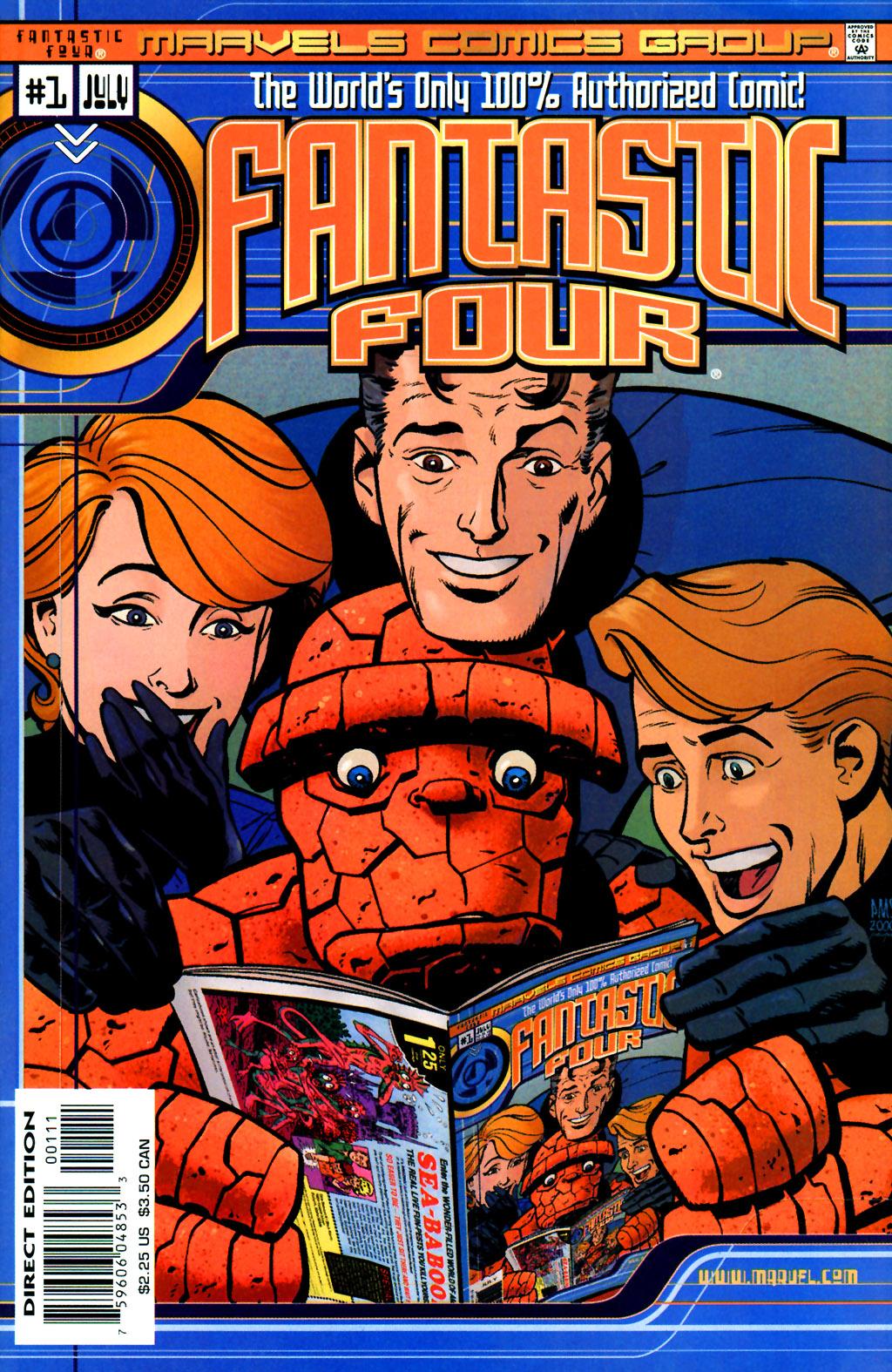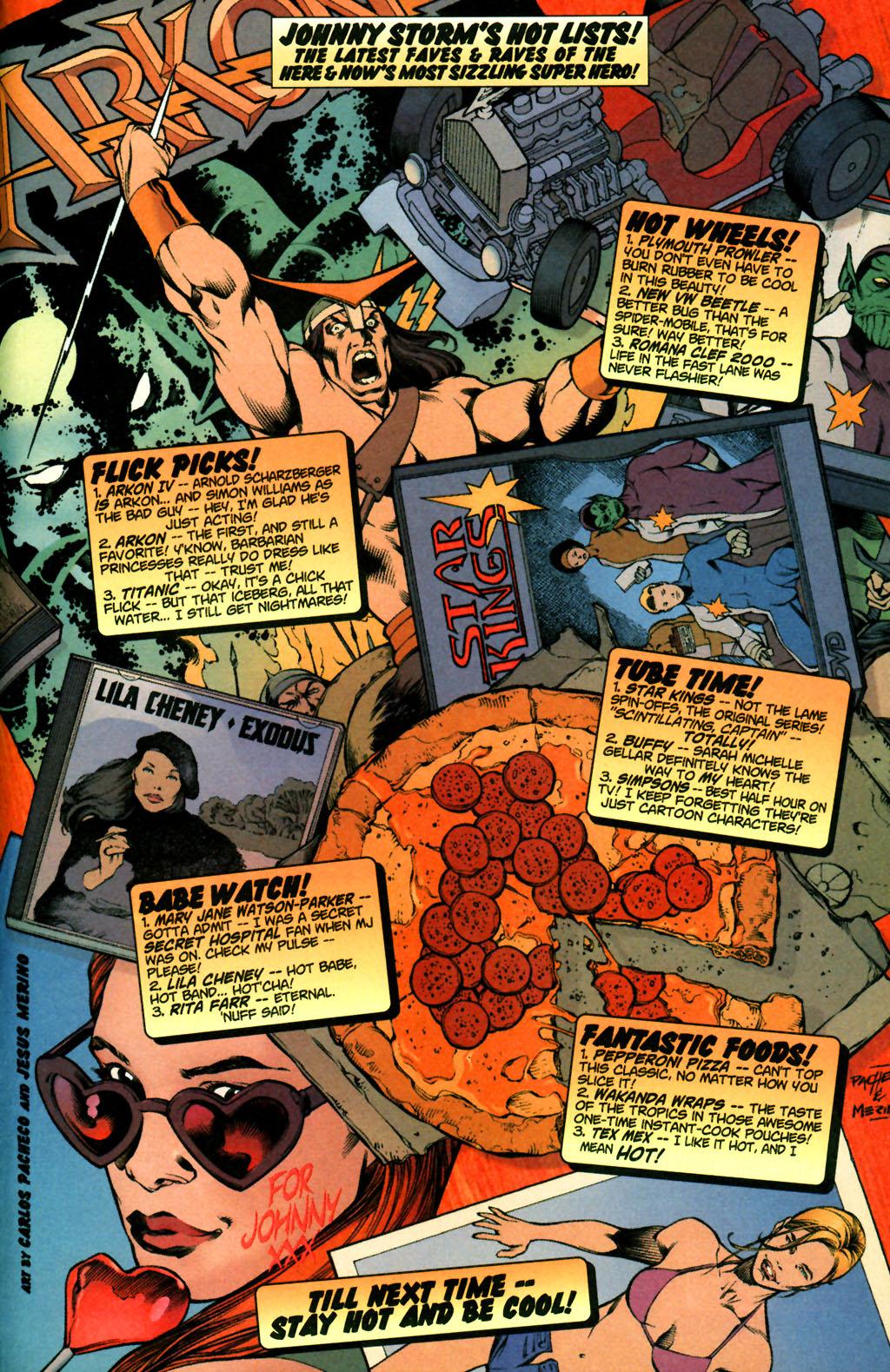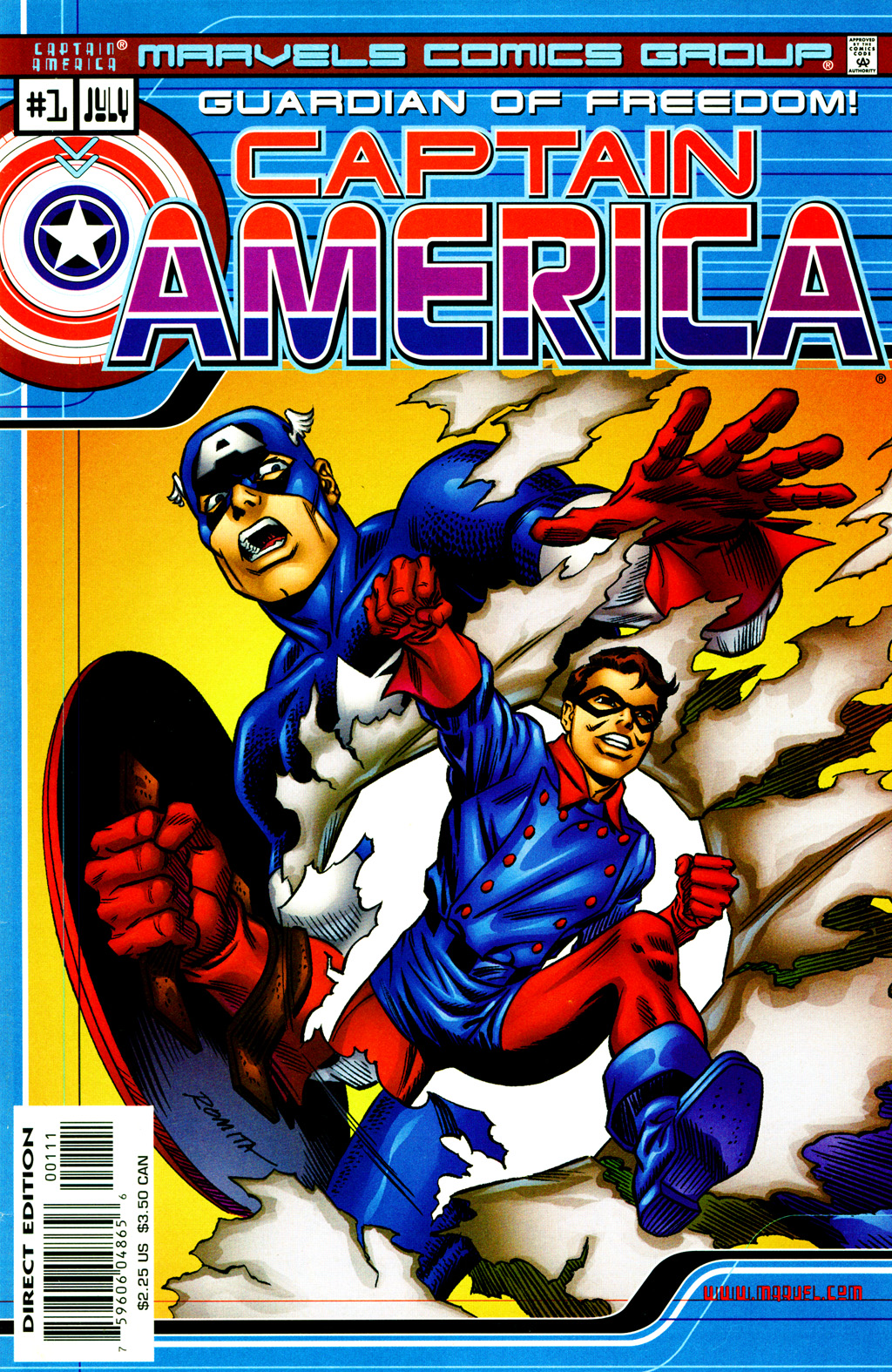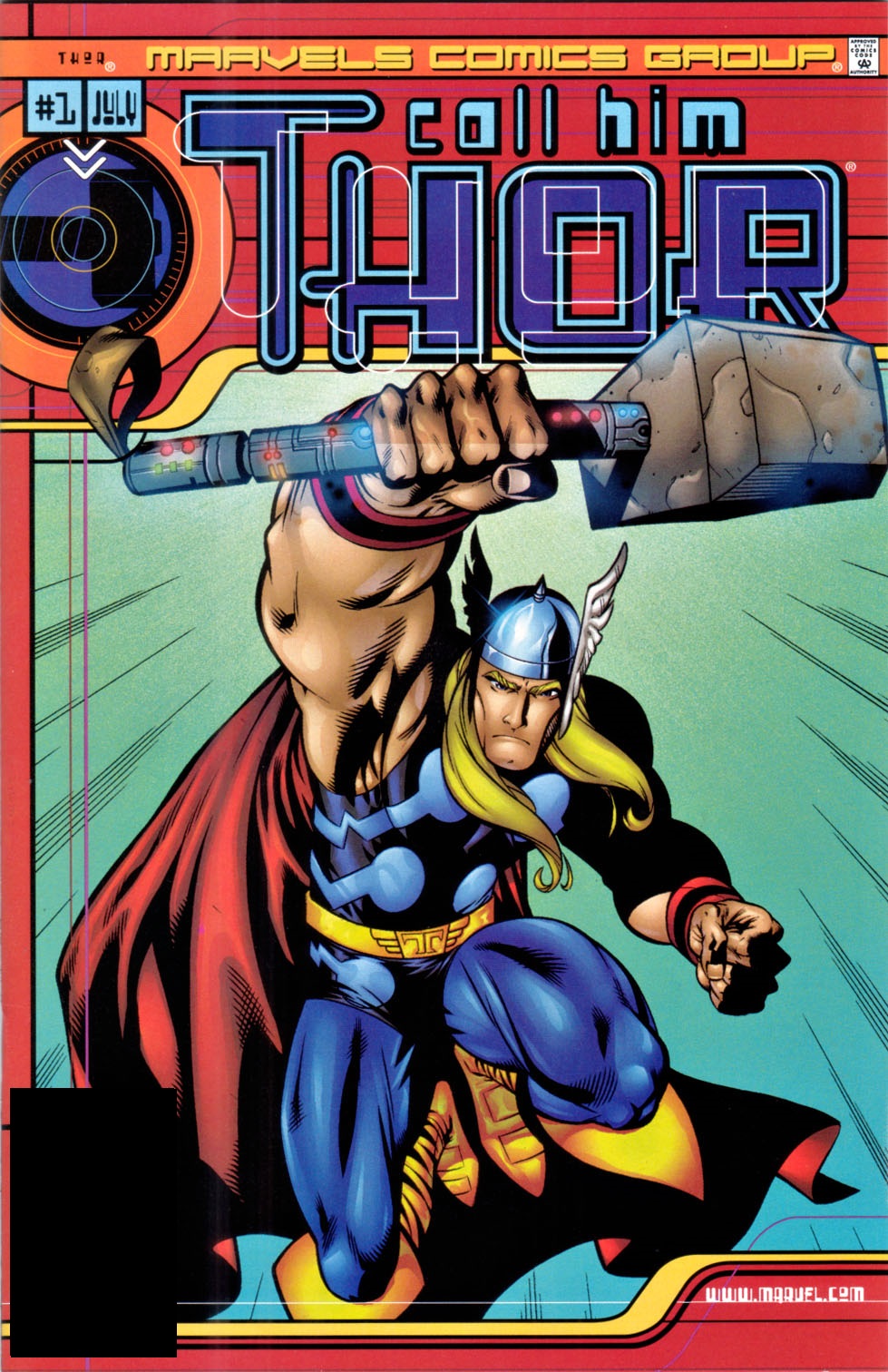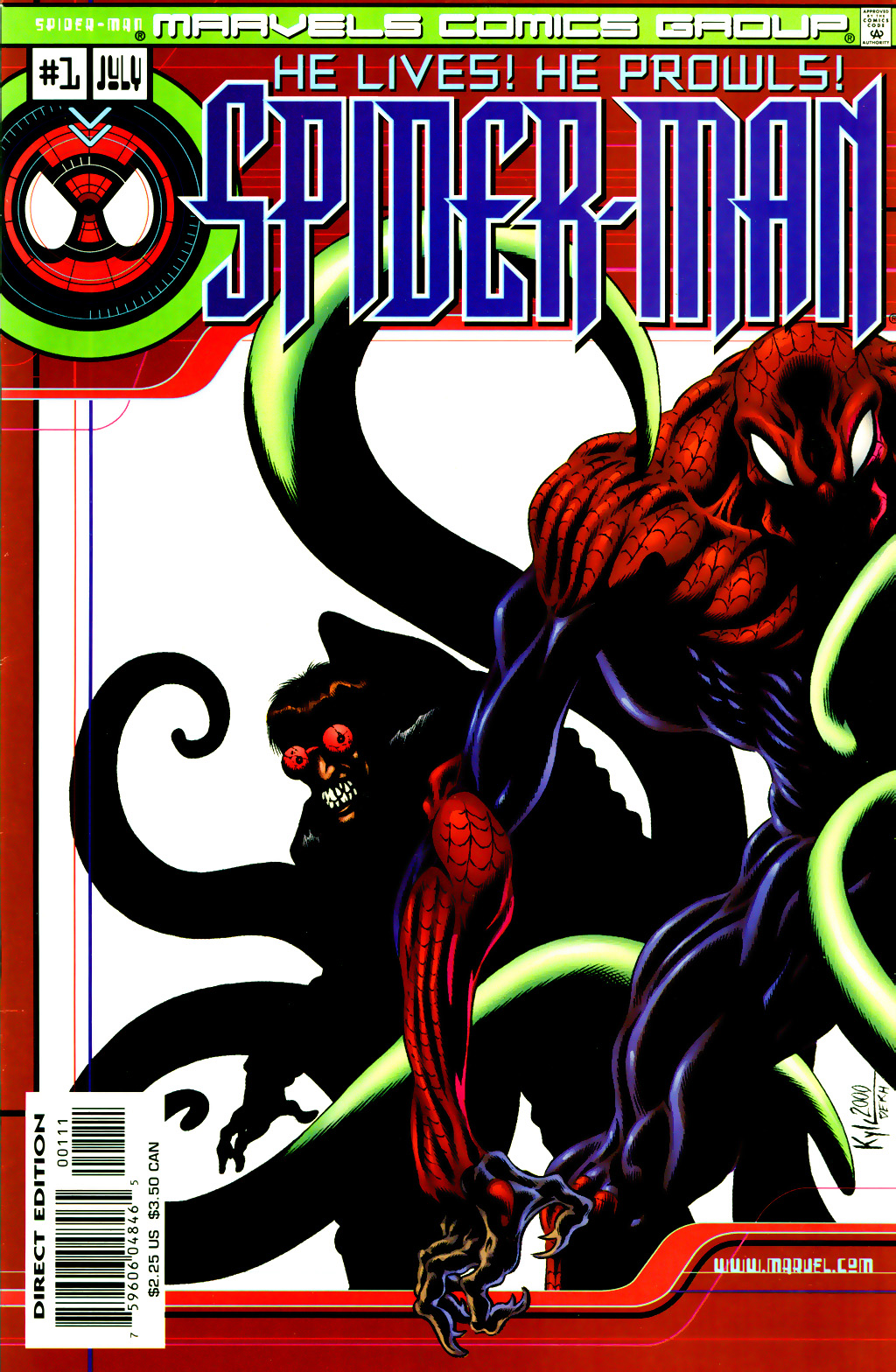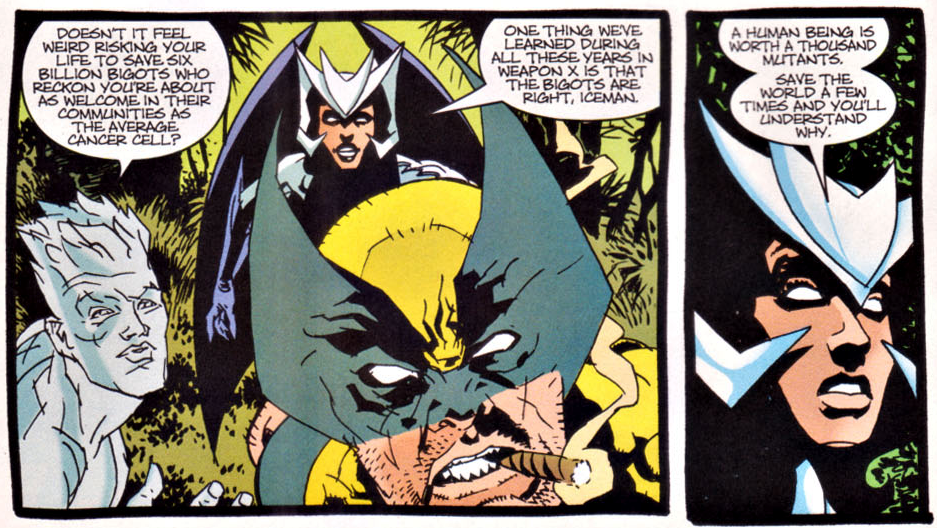Marvel at 80: Marvels Comics
With the release of Captain Marvel confirming that not only does Kevin Smith’s Mallrats exist in the Marvel Universe, but so does Stan Lee.
And Marvel Comics.
I’m sure this didn’t occur to people in the theater, to be honest, but Marvel has a long history of using Marvel Comics as a real company inside their comic universe. Stan Lee and Jack Kirby both showed up as early as the first issues of the Fantastic Four in 1962. Ben Grimm would read issues of the Hulk and crack wise about him, while Doctor Doom even showed up at the Marvel Bullpen to scold Stan and Jack for depicting him so coldly in a previous issue.
This has mostly been forgotten about in more modern comics, as Marvel’s humor has strayed away from the fourth wall breaking antics outside of Deadpool and Gwenpool. However, in what could be considered the last gasp of self-referential humor, Marvel took a week in 2000 that had no significant releases and chose to publish comics from the Marvel Universe itself!
Six comics came out in July 2000, from the Marvels Comics Group. Readers who chanced upon these titles were treated to Beware the Daredevil, Codename X-Men, Call Him Thor, Guardian of Freedom: Captain America, Fantastic Four, and He Lives! He Prowls! Spider-Man. There was also a seventh comic, celebrating 60 years of The World’s Most Accurate Comics.
As explained in the seventh comic, Marvels came about in World War II during the time the original Human Torch and Namor were fighting alongside Captain America in World War II. When the war ended, Marvels tried to keep afloat with unique content but floundered as the public was no longer interested in heroes. Luckily, they survived long enough to see the rise of the Fantastic Four and promptly received a license from them to publish comics in their name.
The Fantastic Four published by Marvels actually reflects this, calling itself The World’s Only 100% Authorized Comic. To further this joke, each portion of the comic is written by a different member of the team. However, the real bonus here is all of the in-universe advertising and articles about the team. Casting a Fantastic Four movie, becoming a member of the team for a day, gossip about the organization, Johnny Storm’s hot list, and even Reed trying to explain Unstable Molecules.
I don’t know about you, but I want to know more about not-Schwarzenegger’s Arkon 4 movie with Wonder Man as a villain.
Captain America was similar to that month. The story is World War: II, People: 0. Amusingly, the story was related by career sidekick Rick Jones, with dialogue assist by Peter David. Further, the artist is actually credited as Steve Rogers. Yes, Captain America’s comics in the Marvel Universe were once drawn by Captain America himself.
While not as charming as the Fantastic Four comic, the book is self-referential to all hell and perfect for any Cap or Peter David fan. Despite being in the middle of a time travel romp, it’s hard not to get sucked into Rick’s ridiculous adventures and the unofficial tale of what happened to Cap to make him vanish for so many years.
After that, though, the comics start getting delightfully weird. Well, more mysterious. Without the word of approval from the heroes being depicted, the creative teams of Marvels Comics had to get creative. Nothing quite so exemplifies that as Call Him Thor.
Rather than take God’s word that he comes from Asgard, the God of Thunder is actually entirely technology based. An alien hammer found by the Jolson family in a crashed UFO provides the Godlike power of Thor to Don Jolson, the second Thor. His father offers tech support and develops a lot of Thor’s tech, and was the first Thor before his jealous brother shattered his legs. Like a demented cross of Superman, Batman, and Shazam, Thor proudly screams across the scene in Iambic Pentameter (until he’s in private). There’s a lot of good character here, and this could easily, be a solid alternate take on Thor.
He Lives! He Prowls! Spider-Man also takes a lot of liberties with the source of public figures. The Daily Bugle has been replaced by The Clarion, with the traditional supporting staff from a Spidey comic being replaced with thinly veiled substitutes. Further, Doctor Octopus shows up… as Professor Squid. This book is probably the weakest of the six, feeling more like a parody book produced by Mad Magazine than an actual comic book. It is interesting to note that Spidey’s book does portray him as a blood-sucking murdering monster, though.
Beware the Daredevil is an interesting take on the phrase “Devil of Hell’s Kitchen.” A literal demon from hell was exposed to the glory of heaven and desires to redeem himself. He does so by cohabitating the body of a human living in Hell’s Kitchen. Stuntman Jimmy Fyre finds himself bonded to the demon Cleombrontos and also pulls sidekick duty alongside the Devil while they try to clean up Hell’s Kitchen. Rather than fight a pastiche of the Kingpin, as he wasn’t a popular subject at the time, the crime lord behind the crime wave is the Warlord.
He is, needless to say, utterly goofy in appearance. The concept of this book, though, is actually really excellent. Like a blend of Ghost Rider, Jack Kirby’s own Etrigan the Demon, and the old school Captain Mar-Vel, this comic has the noir stylings of 80s Daredevil with the otherworldliness of… well... Demons in New York. The minor characters aren’t nearly as entertaining as Cleombrontos, but they do the job.
The final book is one of the more bizarre and still entertaining. Easily my favorite, Codename: X-Men takes what the public could know about the “Mutant Menace” and tries to explain why some work to save humans. Short answer? They’re working for SHIELD as a literal suicide squad. Lacking canonical public coverage, this also results in some hilarious alterations to the Marvel characters. Cyclops now has a stare that turns men to stone. Jean Grey is the Goblin Queen and has a PG version of the real Goblin Queen’s outfit. The list goes on and on. However, it also has some seriously troubling aspects of the book.
You see, it’s remarkably racist against Mutants. While the Marvel of our universe goes through great pains to be as progressive as possible, Codename: X-Men comes from a world where Mutants are hated and feared, and self-hating racism by non-mutant authors seems to be the only way Marvels Comics could figure out how to reconcile this. It’s handled well but comes across as ham-fisted as well.
To make things even weirder, Doctor Strange is the villain of this issue. Running an island of occult cannibal mutants, he’s stolen Tony Stark’s newest nanotech nuke, killed Iron Man (as he’s only Tony’s bodyguard) and eaten Iron Man for good measure. The end result features Wolverine leaping from a plane to catch the nuke mid-flight and flying it back to nuke Doctor Strange in the face. It is everything a funny action comic can and should be, and is another concept I’d love to see Marvel ape for another universe or a canonical X-Men spinoff.
Really, the biggest weakness of the Marvels week is that all of these issues are #1s. These should have been numbered in the dozens or hundreds so it would have felt ideally like a random comic from an alternate universe, which was the idea at the time.
These comics have never been collected, nor have they been reprinted digitally in any way. This is actually unfortunate because it would have been a perfect way to re-introduce the idea of Marvel being a comic company inside their own universe. Luckily, as comics from 2000 that weren’t highly sought after by collectors, these issues can be found on the secondary market well below their cover prices. It’s something easy to find as well, with results being easy to find.
If you’re looking to see what made the movie Stan Lee famous enough to be in Mallrats, give these comics a look. They’re really cool, despite some middling execution, and a great peek into what could have been another universe for Marvel to play with.
After our brief hiatus, we return to our regularly scheduled programming next time. Brian Michael Bendis has arrived, and he’s behind the wheel for Marvel’s significant events. What happens when everyone gets their best ending, and all it takes is sacrificing all they have? That’s right, it’s House of M.


